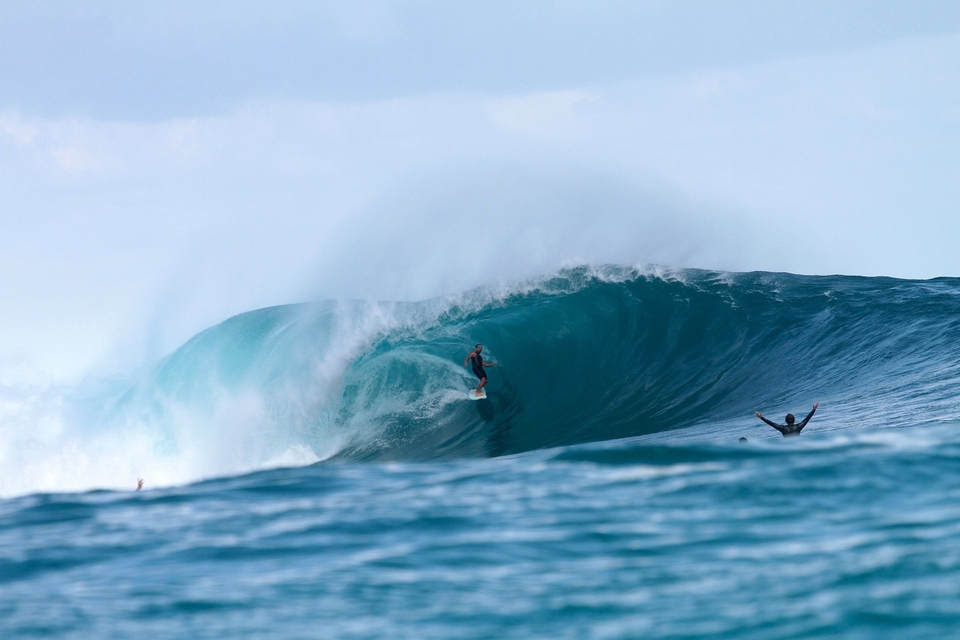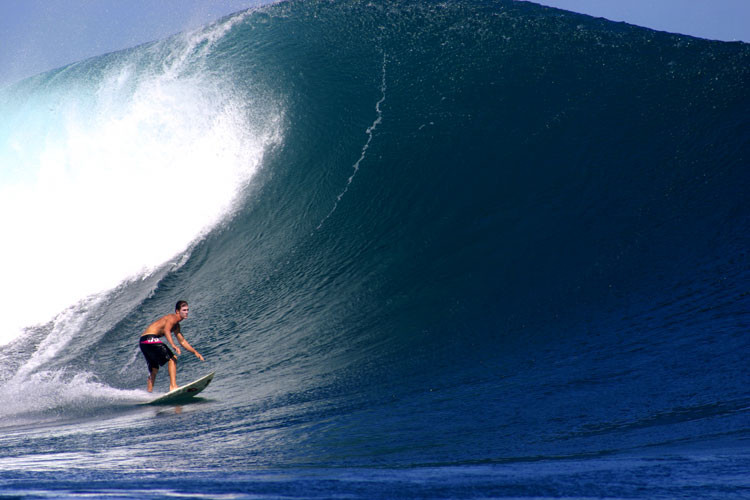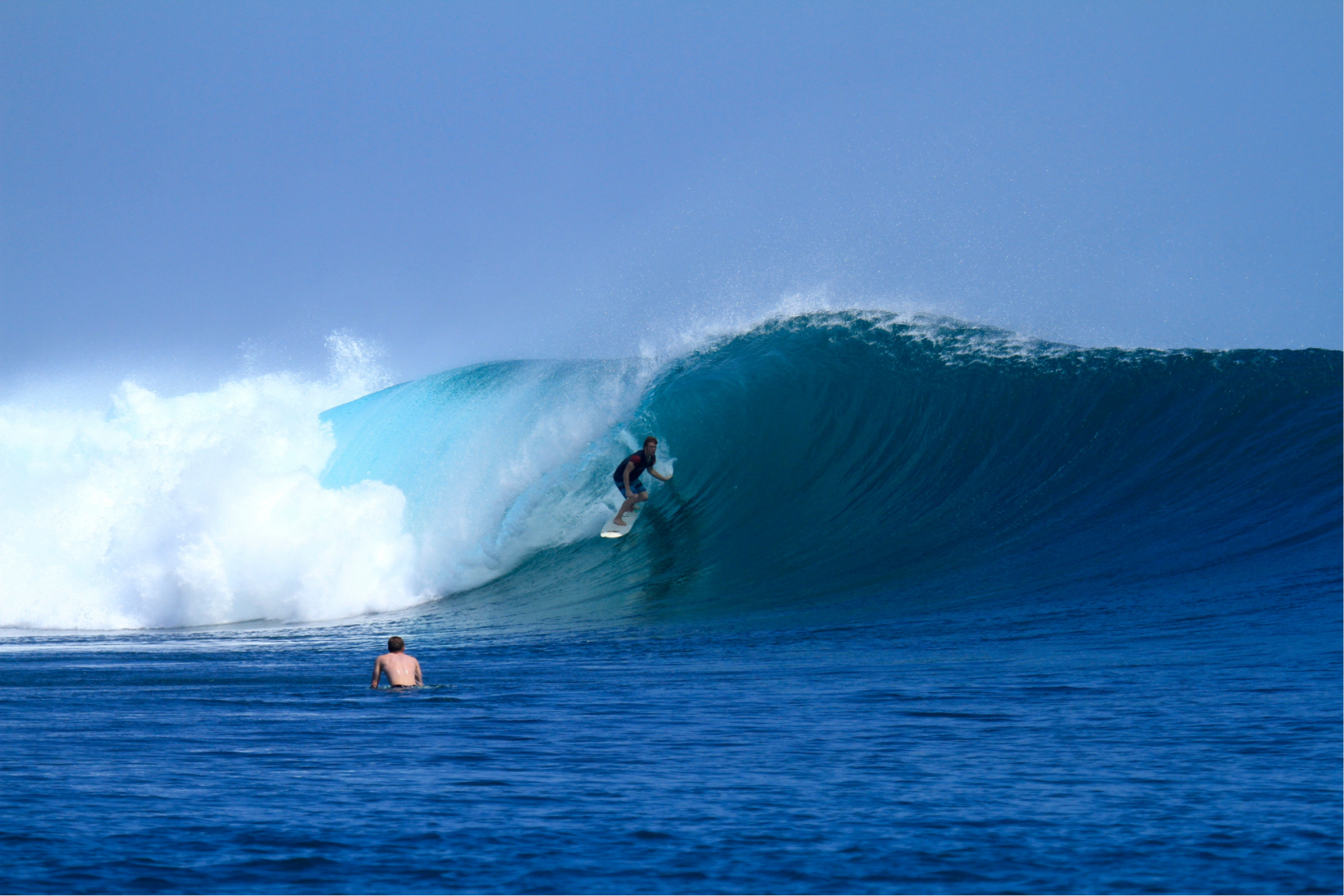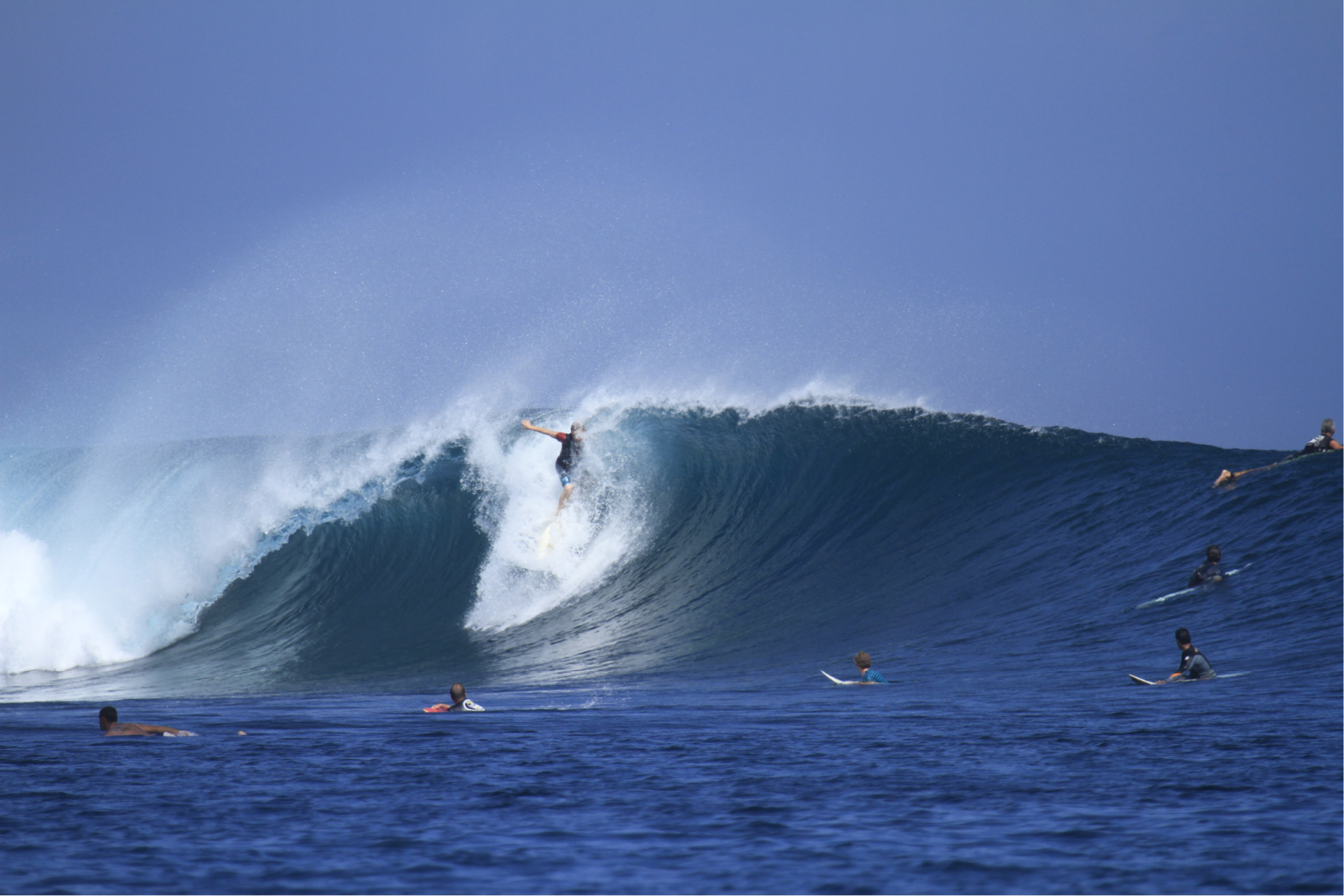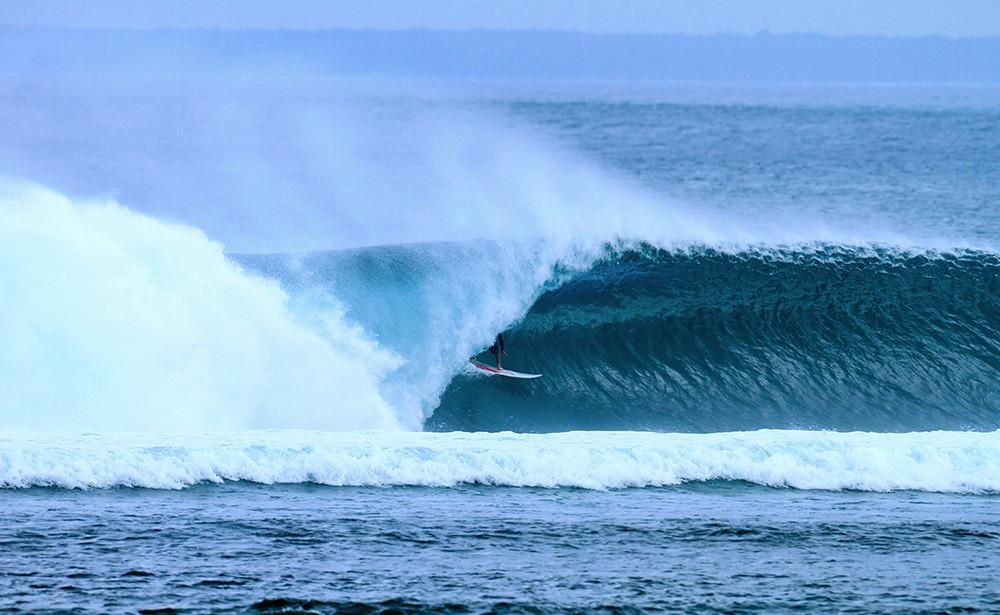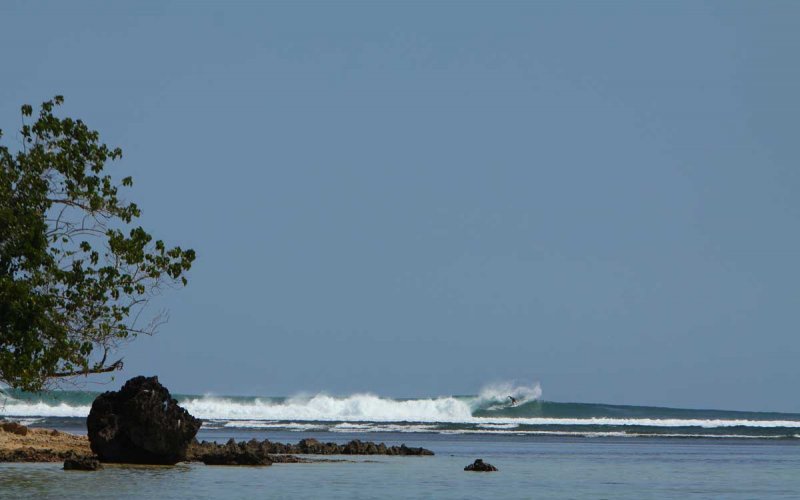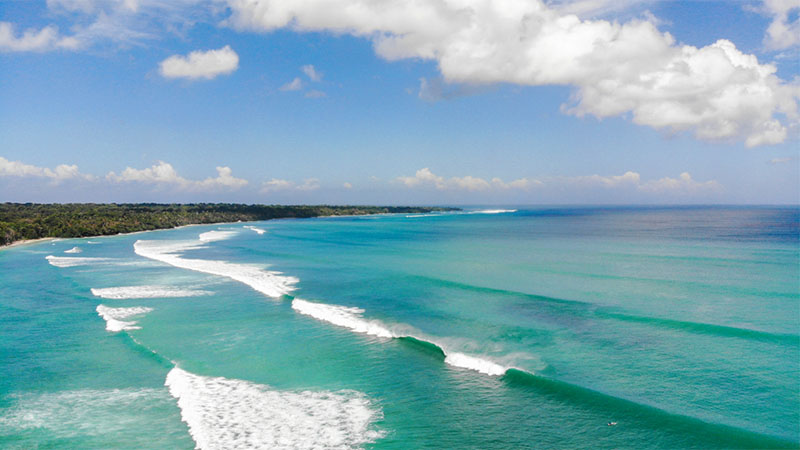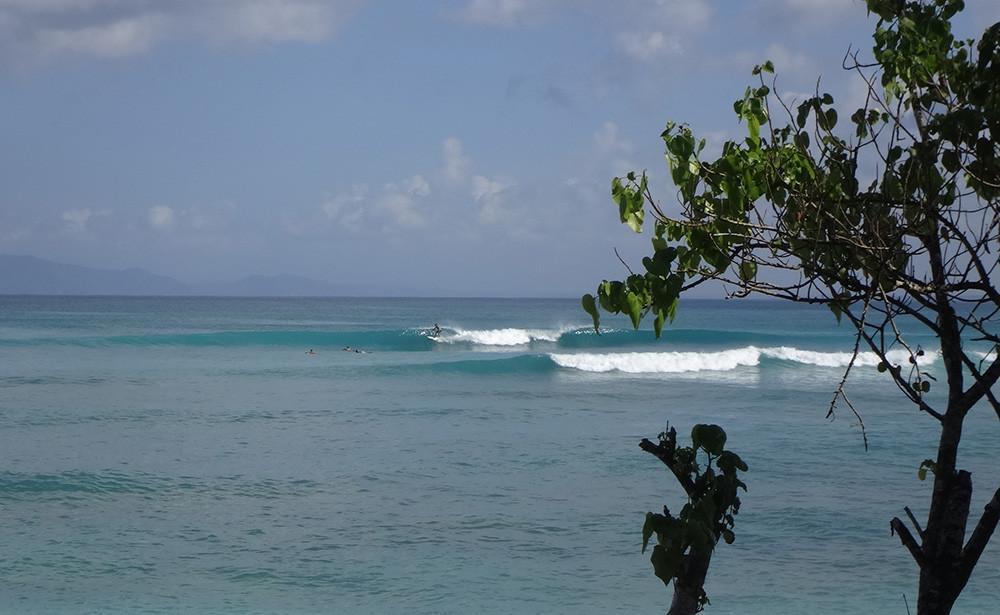G-Land Surf Spots
There are few surf spots so revered as G-Land.
Grajagan Bay was discovered by an elite group of surfers in the mid-1970’s. Thanks to a 10,000 foot drop off a few miles from the edge of Grajagan, a series of mystic, clean, and hollow barrels break for 100’s of metres. Each section is so long that they have their own name. Not unlike the 1970’s, you can still find yourself alone on the beach at G-Land, score a session to yourself, and go days without a phone call. Read on to make the best of your next G-Land Adventure.
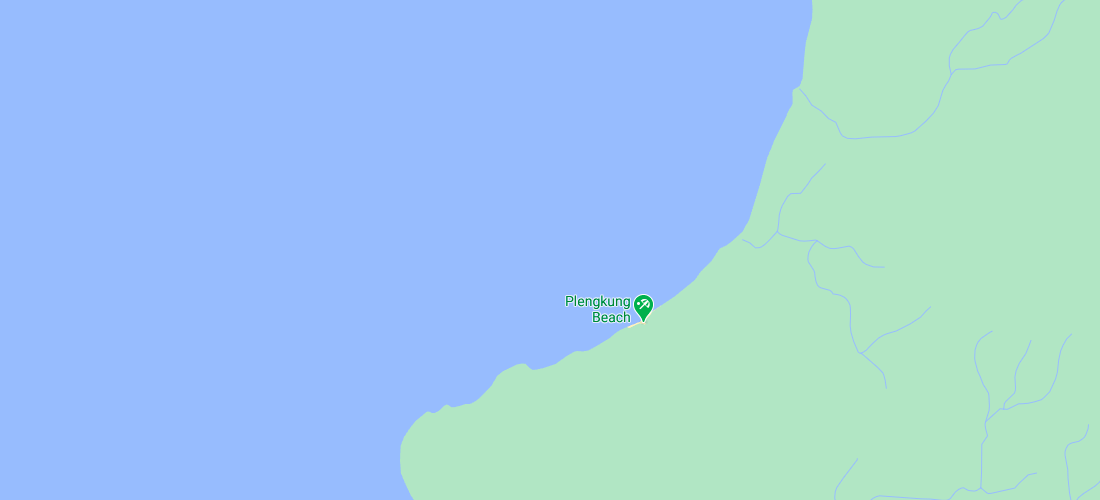
Kongs
The Bombie
Money Trees
Launching Pads
Speedies
Chickens
20/20’s
Tiger Tracks
Keyhole
Wave type:
-
The Bombie: Reef Break
-
Kongs: Reef Break
-
Money Trees: Reef Break
-
Launching Pads: Reef Break
-
Speedies: Reef Break
-
Chickens: Reef Break
-
20/20’s: Reef Break
-
Tiger Tracks: Reef Break
Wave difficulty:
-
The Bombie: Experienced
-
Kongs: Experienced
-
Money Trees: Experienced
-
Launching Pads: Experienced
-
Speedies: Advanced
-
Chickens: Intermediate
-
20/20’s: Intermediate
-
Tiger Tracks: Intermediate
Wave direction:
-
The Bombie: Left
-
Kongs: Left
-
Money Trees: Left
-
Launching Pads: Left
-
Speedies: Left
-
Chickens: Left
-
20/20’s: Left
-
Tiger Tracks: Left,Right
Wave bottom:
-
The Bombie: Reef
-
Kongs: Reef
-
Money Trees: Reef
-
Launching Pads: Reef
-
Speedies: Reef
-
Chickens: Reef
-
20/20’s: Reef
-
Tiger Tracks: Reef
Booties:
Kongs: Yes
G Land: Yes
20/20’s: Yes
Tiger Tracks: Yes
Surfboard type:
Kongs: Shortboard/step-up/semi-gun
G Land: Shortboard/step-up/semi-gun
20/20’s: Shortboard
Tiger Tracks: Shortboard
Crowd factor:
-
The Bombie: Medium Crowds
-
Kongs: Medium Crowds
-
Money Trees: Medium Crowds
-
Launching Pads: Medium Crowds
-
Speedies: Medium Crowds
-
Chickens: Low Crowds
-
20/20’s: Empty
-
Tiger Tracks: Empty
Hazards:
The shallow reef, strong currents, big waves, hollow barrels, intense crowds, mosquitos, sea urchins (lots of them big and small!), aggressive monkeys, snakes, tigers and all.
Best swell direction:
Kongs: W
G Land: SW
20/20’s: SW
Tiger Tracks: S
Best wind direction:
Kongs: E
G Land: E
20/20’s: SE
Tiger Tracks: E
What tide is best:
Kongs: All tides
G Land: All tides
20/20’s: All tides
Tiger Tracks: High tide
Best tide movement:
Kongs: Rising tide
G Land: Rising tide
20/20’s: Rising tide
Tiger Tracks: Rising tide
Wave consistency:
Kongs: Ultra-consistent
G Land: Ultra-consistent
20/20’s: Ultra-consistent
Tiger Tracks: Ultra-consistent
Best time of year:
Kongs: Dry season; April – October
G Land: Dry season; April – October
20/20’s: Dry season; April – October
Tiger Tracks: Dry season; April – October
Lineup vibe:
Kongs: Mellow
G Land: Intense under ideal conditions
20/20’s: Mellow
Tiger Tracks: Mellow
Other names for spot:
Plengkung Beach
Grajagan
The sections described above
How do you get in and out of the surf at Grajagan?
Paddle out through the keyhole near the top of the reef below Kongs. Take your time walking out over the reef and be very careful to not step on any sea urchins or you might cut your surf very short. Take just as much time coming in over the reef as well. The reef at Grajagan will become your worst nightmare at any chance it can get!
Surfing on the high tide is a great idea for the first few sessions until you become familiar with the reef at G-Land. The higher tide is a lot easier to come back in to shore over the reef. In remote surf breaks like this, you are always better to be safe than sorry, in other words, be smart about the decisions you make.
What is the beach like?
The beach at Grajagan Bay is a pristine section of white sand beach fringed by lush jungle. In the 70’s you would likely find large predators stalking the forest for prey such as tigers or panthers. While these are less common today, you can still see amazing wildlife in the neighbouring jungle. A perfect place to escape from the hustle and bustle of Java and neighbouring Bali, the beaches will give you a taste of the wilderness this part of the world is known for, especially at night when the jungle can be louder than a city!
Where can I stay?
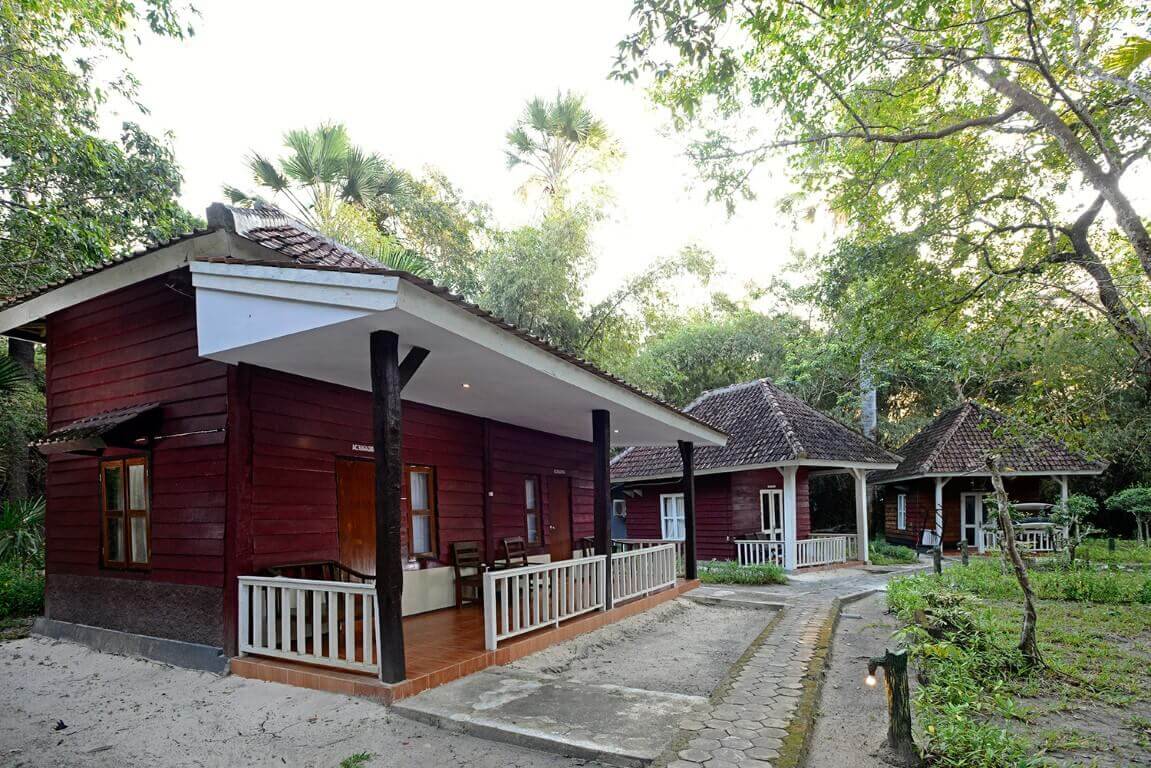
Mid Price Range – Jack’s Surf Camp
Jack’s Surf Camp is conveniently located in front of the keyhole near the top of the reef below Kongs where you paddle out. Their ocean view restaurant and range of activities from fishing to off-road adventures and more keep you happy in between barrels. Jack’s offers three packages for guests to choose from (Budget, Standard or Bungalow) which include the fast boat round trip from Bali to G Land.
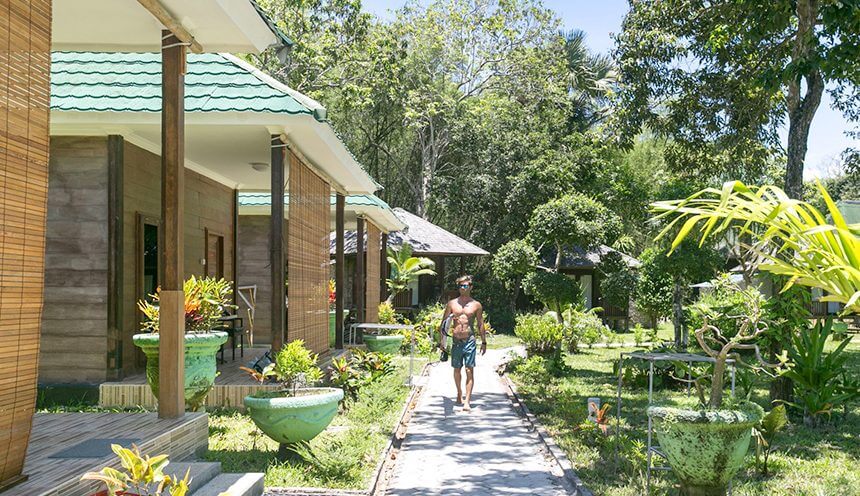
Luxury Price Range – Bobby’s Surf Camp
Bobby’s Surf Camp was the first accommodation to be constructed at G-Land more than 30 years ago by two brothers (Mike and Bill Boyum – who were some of the first to surf G Land) along with a Balinese friend Nyoman ‘Bobby’ Radiasa. Owned and operated by Bobby this seamlessly run camp provides an unforgettable adventure to surfers on the search offering three packages for guests to choose from (Standard, Delux or Superior) which include the fast boat round trip from Bali to G Land.
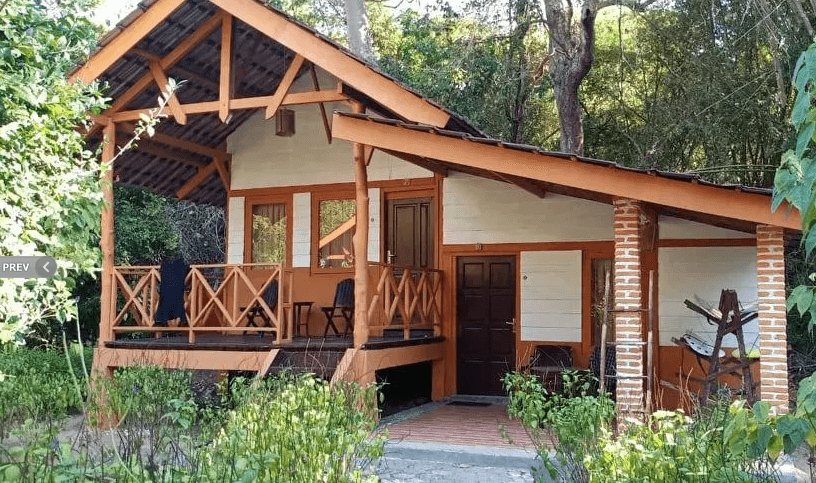
Luxury Price Range – Yoyo’s Surf Camp
Yoyo’s Surf Camp operates from March to November and is located directly in front of the famous barreling section of Grajagan reef known as Speedies. Yoyo’s provide bungalow style accommodation with a large communal area known as the central relaxation house with internet, pool tables, tables tennis, yoga hall and more to keep you entertained in between surfs. Yoyo’s offers four packages for guests to choose from (Standard, Delux, Superior or VIP) which include the fast boat round trip from Bali to G Land.
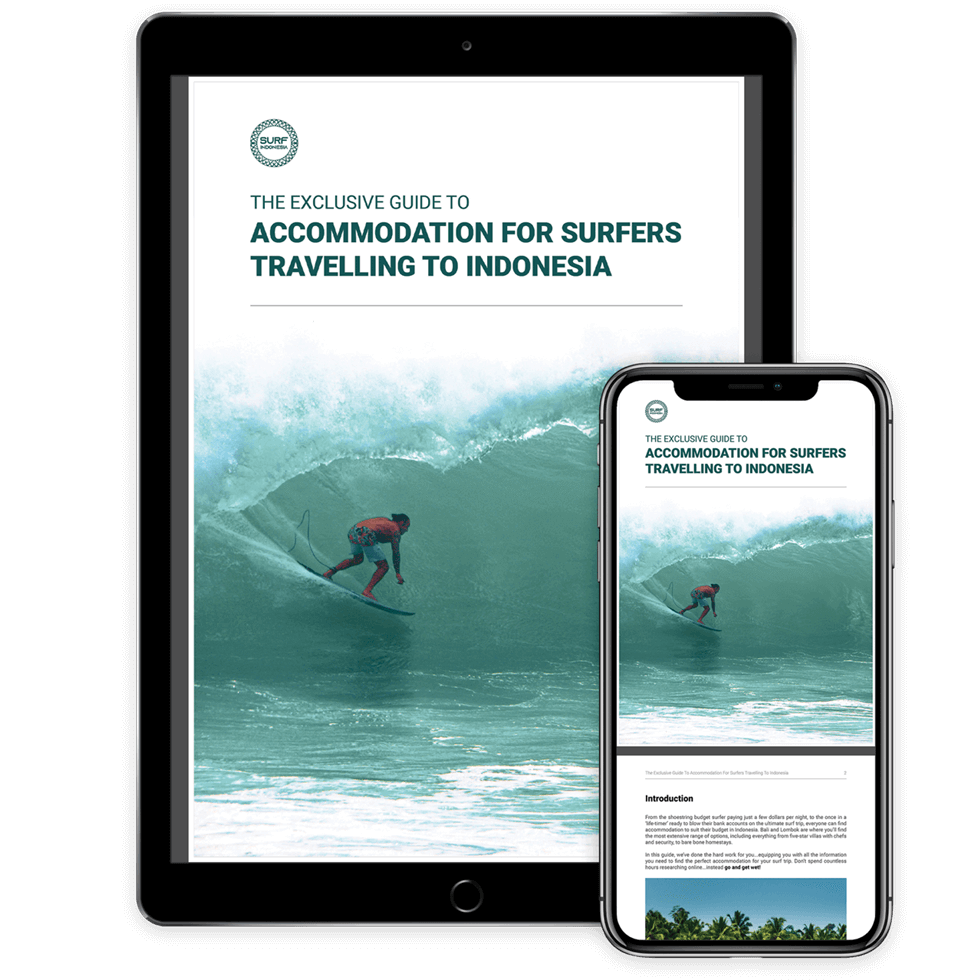
Download for free
The Exclusive Guide To Accommodation
For Surfers Travelling To Indonesia
Faq
Who discovered G-Land?
The famous lefts of G-Land were first surfed in 1972. On a flight to Bali, Bob Laverty saw long lefts breaking along the reef while looking out the window. and organised a voyage to scope it out soon after. Together Bob Laverty and Bill Boyum were the first to surf what was referred to as “the ultimate left” and now more commonly “G-Land”.
What else is there to do in the area other than surfing?
Green Bay (pictured) – Teluk Hijau or Green Bay is a stunning jungle-lined white sand beach and large waterfall with a beautiful ocean green water bay protected from open ocean swells. Located about 90 km to the south of Banyuwangi town, Green Bay can be reached by following the directions from Banyuwangi to Pesanggaran-Sarongan-Sukamade. Park up near Rajagwesi beach and walk approximately two kilometres to Green Bay.
Red Island – Situated in Banyuwangi, East Java, Red Island takes its name from the large rock island jutting out in front of the beach. The waves are perfectly suited to beginner surfers with a safe sand-bottom and low crowds. Home to an A-frame beach break, with long right and left-hand peeling waves, perfect for learning and refining your surfing ability.
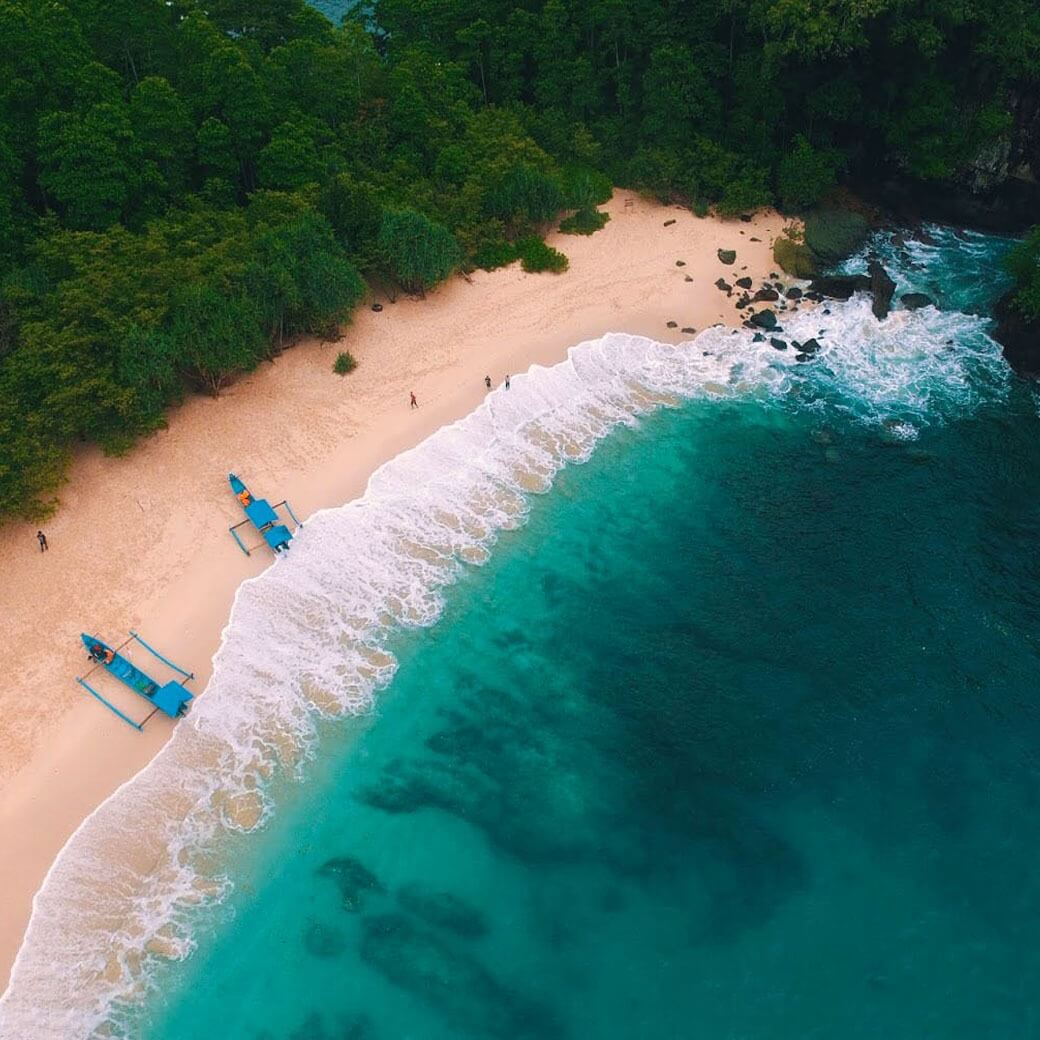
What else
do I need
to Know?
Access Our Exclusive Members-Only Content
Unlock the Spot Finder, all Spot Guides, Member Perks and more.
Location
Where is G-Land?
G-Land is located on the southern tip of the island of Java. At the far end of a peninsula extending westward into the Indian Ocean from one of Java’s largest ecological preserve, Taman Nasional Alas Purwo, G-Land is nestled into one of Java’s last surviving tropical forests.
How to get to G-Land from Bali?
There are two ways to access G-Land.
